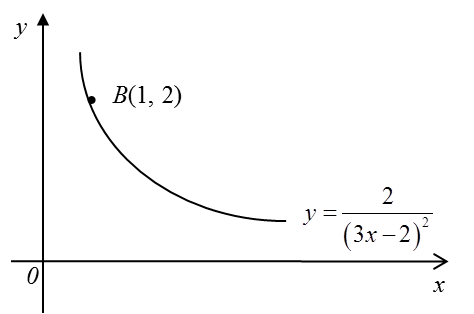Question 1:
Find the integral of each of the following.(a)∫(3x2−52x3+2)dx(b)∫x2(x5+2x)dx(c)∫3x4+2xx3dx(d)∫(7+x)(7−x)x4dx(e)∫(5x−1)3dx(f)∫3(4x+7)8dx
Solution:
(a)
∫(3x2−52x3+2)dx=∫(3x−2−5x−32+2)dx=−3x−1+5x−24+2x+c=−3x+54x2+2x+c
(b)
∫x2(x5+2x)dx=∫(x7+2x3)dx=x88+2x44+c=x88+x42+c
(c)
∫3x4+2xx3dx=∫(3x4x3+2xx3)dx=∫(3x+2x−2)dx=3x22−2x+c
(d)
∫(7+x)(7−x)x4dx=∫(49−x2x4)dx=∫(49x4−1x2)dx=∫(49x−4−x−2)dx=49x−3−3+1x+c=−493x3+1x+c
(e)
∫(5x−1)3dx=(5x−1)4(4)(5)+c=120(5x−1)4+c
(f)
∫3(4x+7)8dx=∫3(4x+7)−8dx=3(4x+7)−7(−7)(4)+c=−328(4x+7)7+c
Find the integral of each of the following.(a)∫(3x2−52x3+2)dx(b)∫x2(x5+2x)dx(c)∫3x4+2xx3dx(d)∫(7+x)(7−x)x4dx(e)∫(5x−1)3dx(f)∫3(4x+7)8dx
Solution:
(a)
∫(3x2−52x3+2)dx=∫(3x−2−5x−32+2)dx=−3x−1+5x−24+2x+c=−3x+54x2+2x+c
(b)
∫x2(x5+2x)dx=∫(x7+2x3)dx=x88+2x44+c=x88+x42+c
(c)
∫3x4+2xx3dx=∫(3x4x3+2xx3)dx=∫(3x+2x−2)dx=3x22−2x+c
(d)
∫(7+x)(7−x)x4dx=∫(49−x2x4)dx=∫(49x4−1x2)dx=∫(49x−4−x−2)dx=49x−3−3+1x+c=−493x3+1x+c
(e)
∫(5x−1)3dx=(5x−1)4(4)(5)+c=120(5x−1)4+c
(f)
∫3(4x+7)8dx=∫3(4x+7)−8dx=3(4x+7)−7(−7)(4)+c=−328(4x+7)7+c





